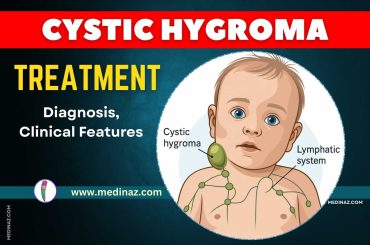Acute Respiratory Distress Syndrome USMLE Notes & Mnemonics contains all the high-yield points you need to know.
Definition:
- ARDS: A form of acute lung injury characterized by widespread inflammation in the lungs and severe hypoxemia.
Pathophysiology:
- Diffuse Alveolar Damage: Leads to increased permeability of the alveolar-capillary barrier.
- Inflammatory Response: Results in pulmonary edema, atelectasis, and impaired gas exchange.
Etiology:
- Direct Lung Injury: Pneumonia, aspiration, pulmonary contusion.
- Indirect Lung Injury: Sepsis, severe trauma, transfusion-related acute lung injury (TRALI), pancreatitis.
Clinical Features:
- Acute Onset: Rapidly developing respiratory failure. (Ref)
- Severe Hypoxemia: Not responsive to oxygen therapy alone.
- Bilateral Pulmonary Infiltrates: Seen on chest X-ray or CT, not fully explained by heart failure or fluid overload.
Diagnosis:
- Berlin Criteria: Used for diagnosis, including timing, radiographic findings, origin of edema, and degree of hypoxemia (PaO2/FiO2 ratio).
- Exclusion of Cardiac Failure: Often using echocardiography.
Management:
- Supportive Care: Mainstay of treatment.
- Mechanical Ventilation: Low tidal volume (4-6 mL/kg predicted body weight) and low plateau pressures to minimize lung injury.
- Positive End-Expiratory Pressure (PEEP): To prevent alveolar collapse.
- Prone Positioning: In severe cases to improve oxygenation.
- Fluid Management: Conservative strategy to minimize lung edema.
- Treat Underlying Cause: Address any identifiable cause of ARDS.
Complications:
- Barotrauma: Due to mechanical ventilation.
- Ventilator-Associated Pneumonia (VAP).
- Pulmonary Fibrosis: In long-term survivors.
Mnemonic: “ARDS”
- Acute onset
- Respiratory distress
- Diffuse pulmonary infiltrates
- Severe hypoxemia
Chart: ARDS Management and Criteria
| Management Aspect | Description |
|---|---|
| Ventilation Strategy | Low tidal volume, low plateau pressures, PEEP |
| Positioning | Prone positioning in severe cases |
| Fluid Management | Conservative strategy, monitor closely |
| Underlying Cause | Treat infections, manage sepsis, etc. |
| Diagnostic Criteria | Description |
|---|---|
| Timing | Within 1 week of known clinical insult |
| Chest Imaging | Bilateral opacities, not explained by effusions, lobar collapse, or nodules |
| Origin of Edema | Respiratory failure not fully explained by cardiac failure or fluid overload |
| Oxygenation | PaO2/FiO2 ratio with specific cutoffs based on severity |
Note: For the USMLE, understand the pathophysiology of ARDS, recognize its clinical presentation and radiographic findings, and be familiar with the principles of mechanical ventilation and supportive care. Knowledge of the Berlin Criteria for diagnosis and the management of complications associated with ARDS and mechanical ventilation is also crucial.
Check other important USMLE Notes
A Visual Learning Platform





